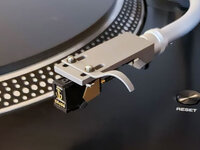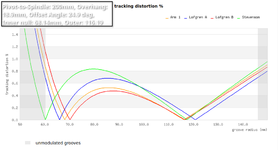Got the Dr. Feickert alignment protractor in and have realigned my cartridge to Loefgren B. I’m really happy with it.
Thoughts:
It’s made extremely well. You’ll never need another gauge. It’s built to last a lifetime. It’ll work on any turntable out there. Packaging is meant to last as well. The instructions are clear and concise and are in both German and English.
It’s easy to use. It comes with a small flashlight which comes in handy. The included flashiight is easier than using the flashlight in my phone.
From Barerwald overhang to Loefgren B is so close it’s not even funny. Less than 2mm. The cartridge is offset in the headshell a bit less than before. Does it sound better? A bit. Highs seem a bit smoother. Ambience seems improved. We aren’t talking night and day though, and I doubt I’d hear the difference on a less resolving system.
That said, I don’t regret my purchase at all. I’m a bit (ok a lot) OCD when it comes to properly setting up a turntable. Stuff like this can keep me awake at night. I’m not kidding.
So here’s where I tell you to run out and get one, right? Nope. If you’ve got a MoFi Geo Disc, you are good. Likewise the the gauges you can get from your turntable manufacturer, whether it be UTurn or VPI.
Still, recommended if you want to be 100% sure of your alignment, have multiple turntables, change cartridges often or install cartridges for others.

